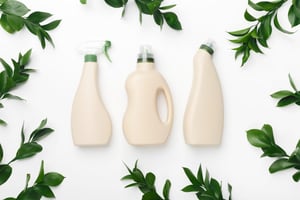Environmental Footprint of Metal vs Plastic Packaging

Most people think they are making a sustainable choice when opting for metal packaging, as metal is thought to be durable and recyclable. Unfortunately, this is not always the case.
Metal packaging, just because it's recyclable, doesn't necessarily mean it's the most sustainable packaging option. There are several indirect impacts such as transportation of heavy metal packaging and energy consumption during the manufacturing of metal that severely burden its life cycle. Plus, a great deal of used metal still goes to landfills due to the way metal is disposed of by consumers.
Here are some things to consider regarding the environmental footprint of metal:
Sustainability Drawbacks of Metal
- Resource-intensive, greenhouse gas (GHG) emission heavy manufacturing process
- Heavy packaging material, making it less environmentally friendly in transportation
- Incinerating non-recycled metal causes a lot of CO2 emissions
Depending on the industry and products your business carries, choosing metal packaging can have disadvantages beyond sustainability. Below are some factors to take into account:
Other Disadvantages of Metal
- Expensive packaging material due to the weight
- Vulnerable to corrosion, such as rust
- Rigid and difficult to store effectively
- Dents easily, making the packaging vulnerable to leakage
- Packaging is only available in a few shapes and sizes
- Problematic supply chain and instable pricing
Metal Packaging Alternatives
Metal is known for its durability but is generally not the best packaging choice. Although plastics are the subject of frequent global debate and criticism, they play an important role in reducing greenhouse gas emissions compared to alternatives such as metal and glass. Over the past 15 years, many manufacturers have switched to plastic packaging for reasons such as sustainability, design versatility, supply chain flexibility and durability.
By replacing your metal packaging with plastic, you can avoid corrosion, support the circular economy, and lower costs without compromising design freedom.
Advantages of Plastic
- Less intensive to produce, reducing greenhouse gas (GHG) emissions
- Weight efficient, thus lower cost and easier to transport
- Highly customizable
- Durable with a long life cycle
- Stable supply chain and pricing
High density polyethylene (HDPE) and polypropylene (PP) are widely used for packaging, but don't provide effective barriers against many ingredients. This can result in discoloration, weight loss, labels coming off, loose caps, ingredient loss and formulation instability. Choosing Enkase barrier technology will enable protection, full recyclability and allow total design freedom for your packaging.
For all the ways Enkase can protect your products and the environment, read the benefits below:
Benefits of Enkase Recyclable Barrier Packaging
- Recyclable barrier technology with the lowest Global Warming Potential
- Ensures quality and product protection
- Increases shelf life
- Enables light-weighting
- Design freedom, flexibility and versatility
- Packaging durability
Check out our blog, to discover how Enkase can be the right barrier packaging for your products.
To learn more or to download the datasheet on how replacing metal packaging with Enkase barrier technology can benefit your products.


